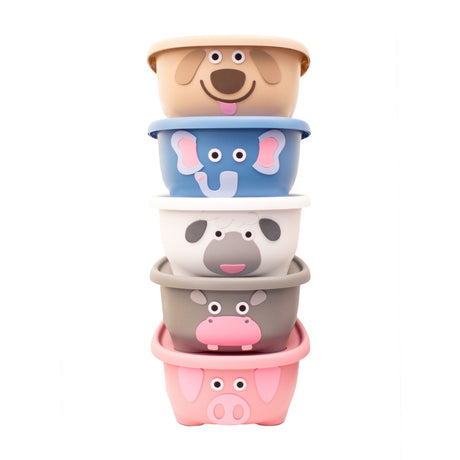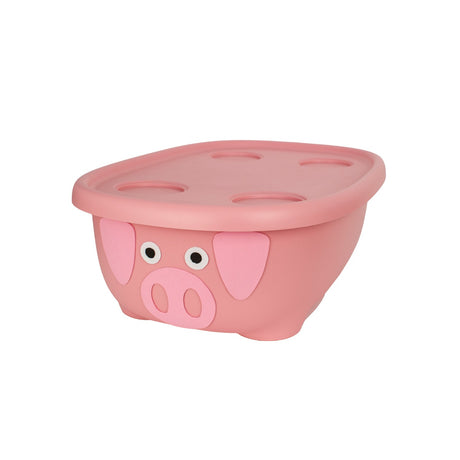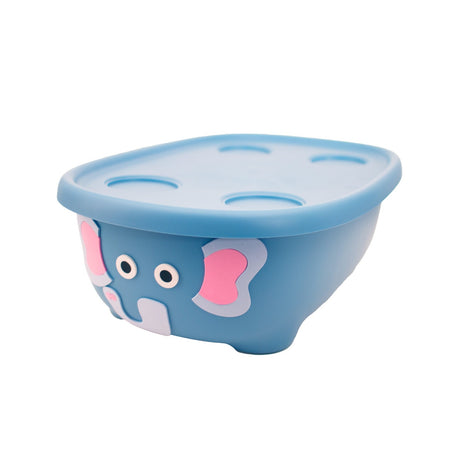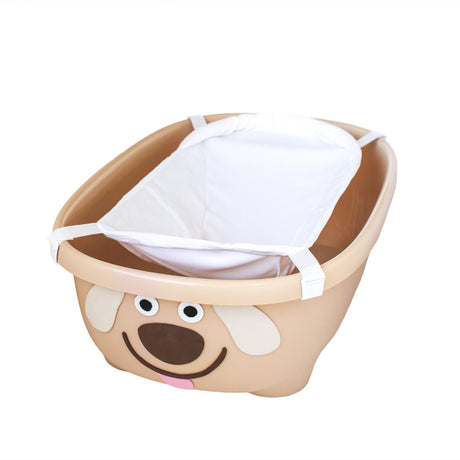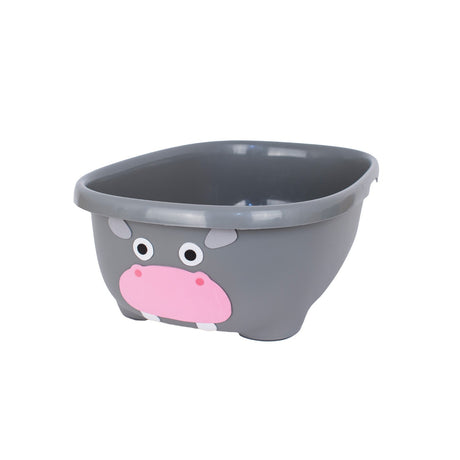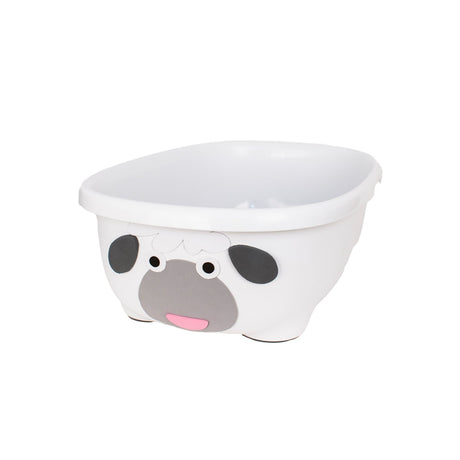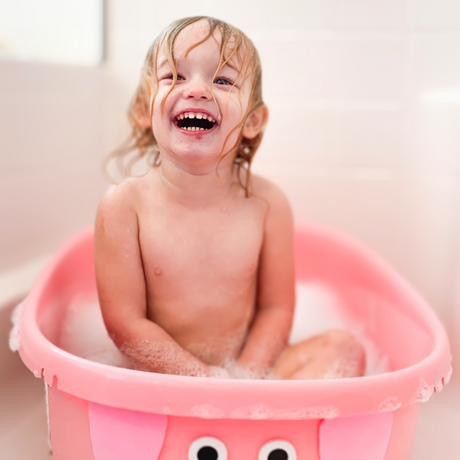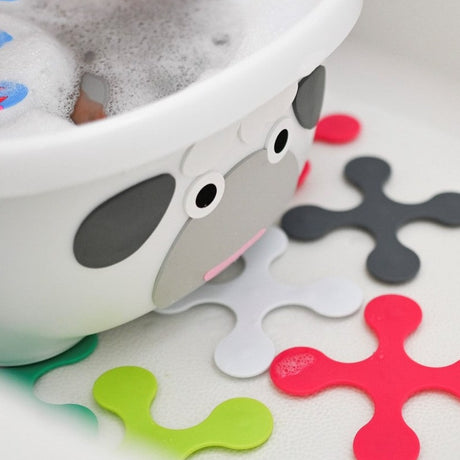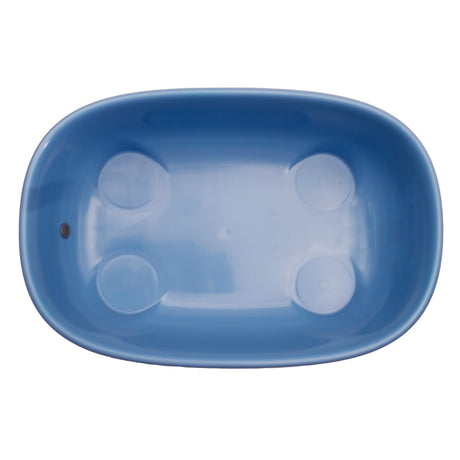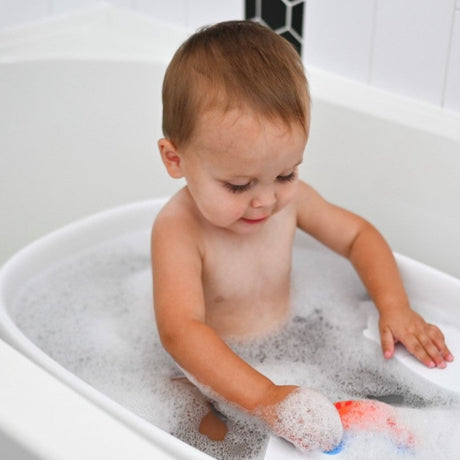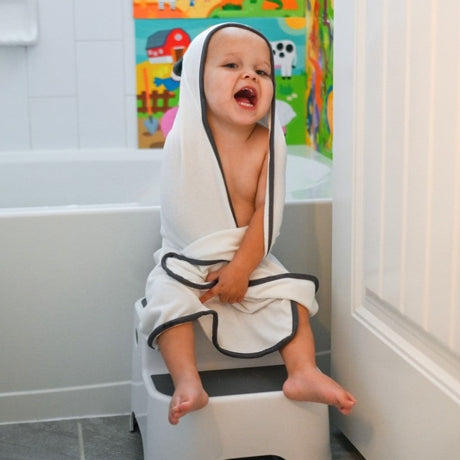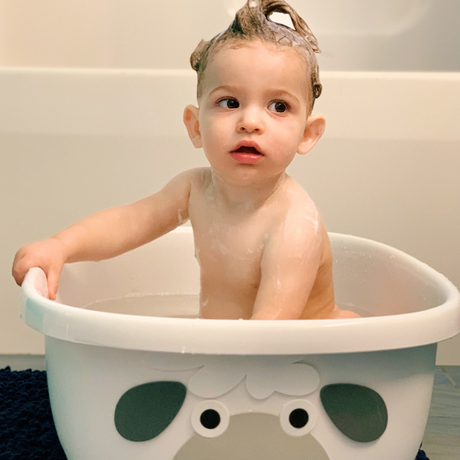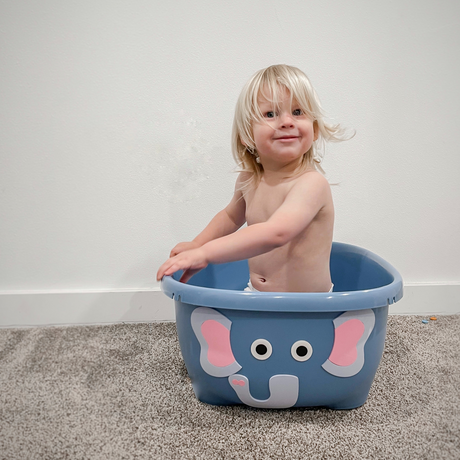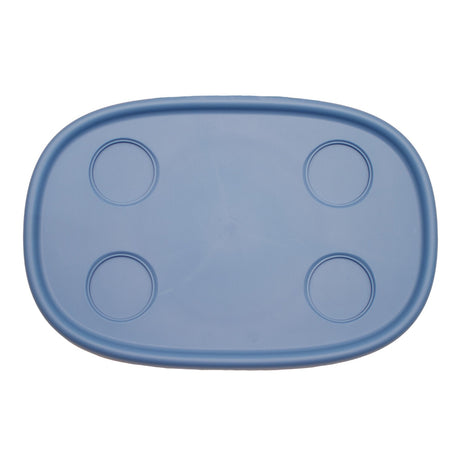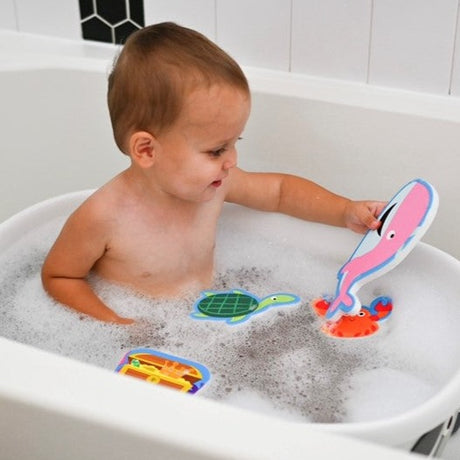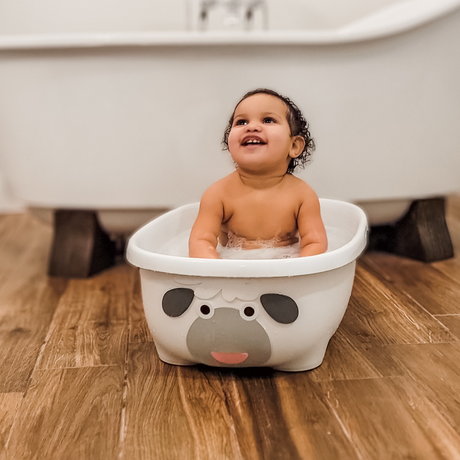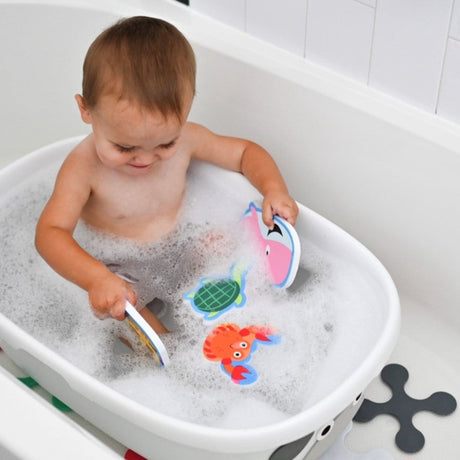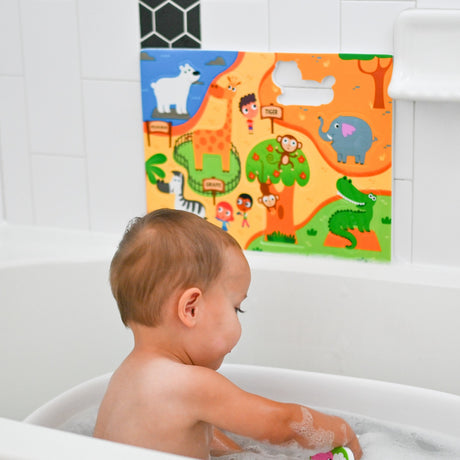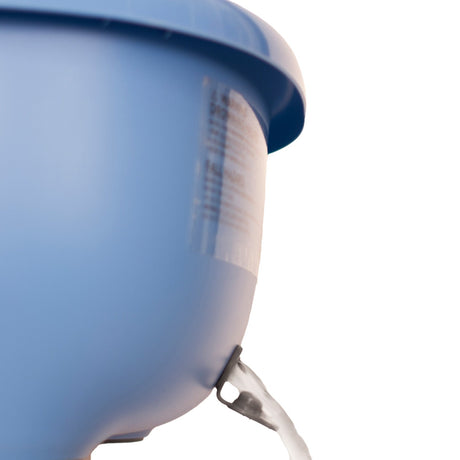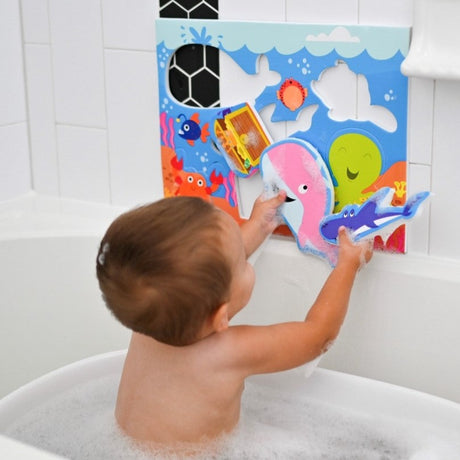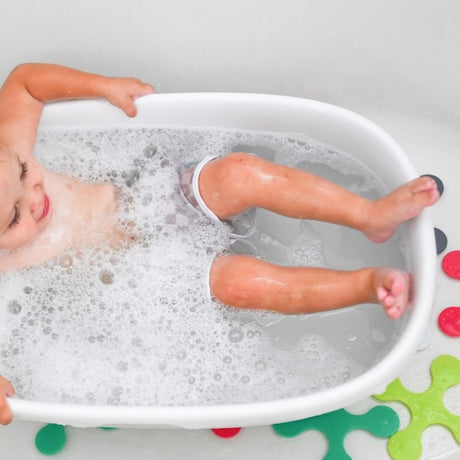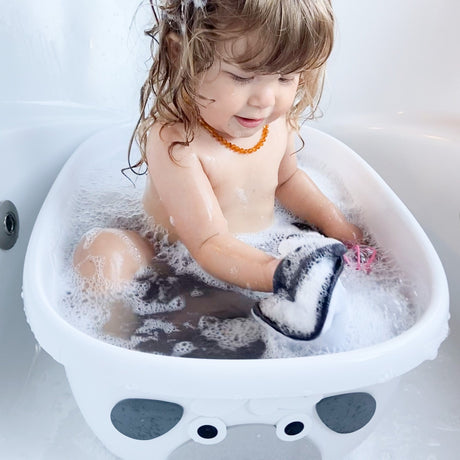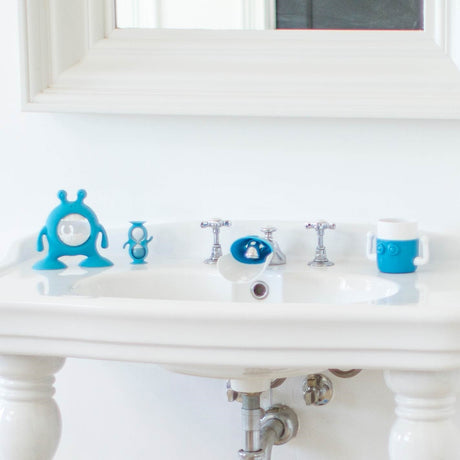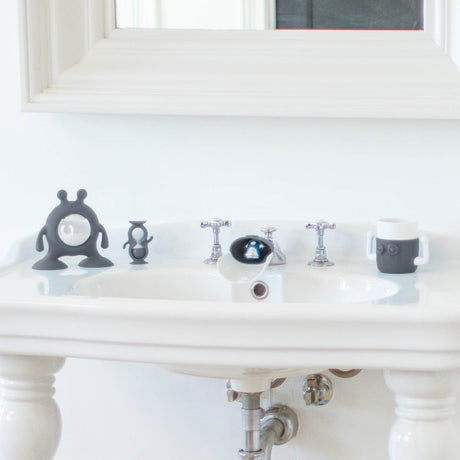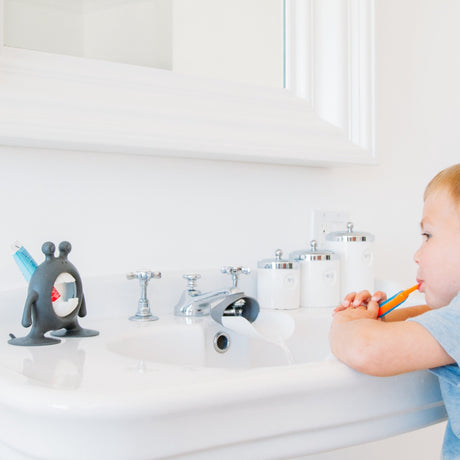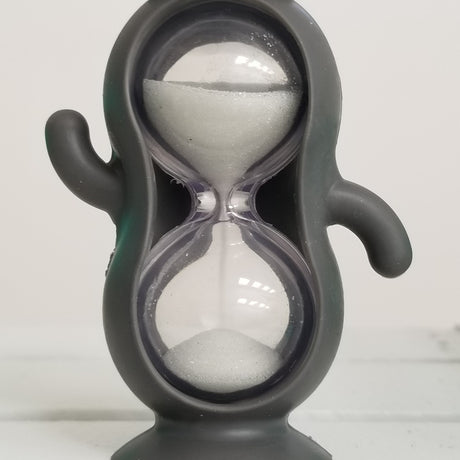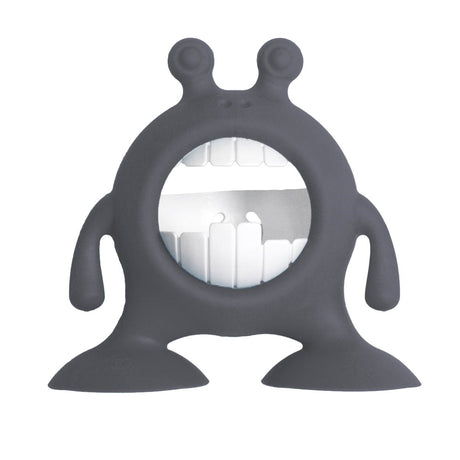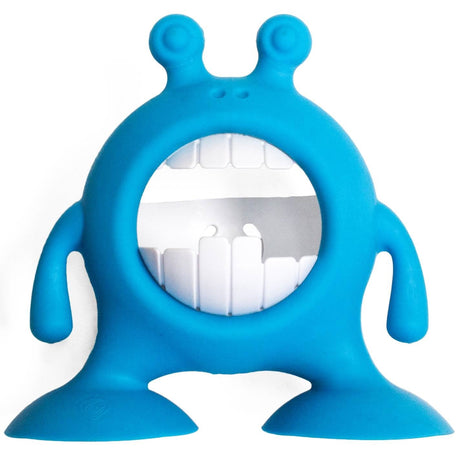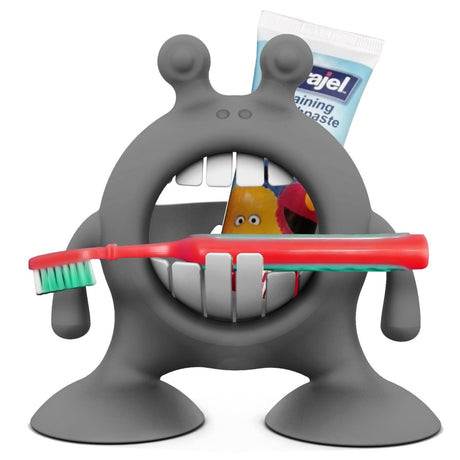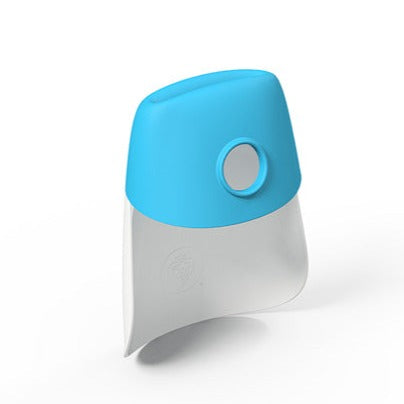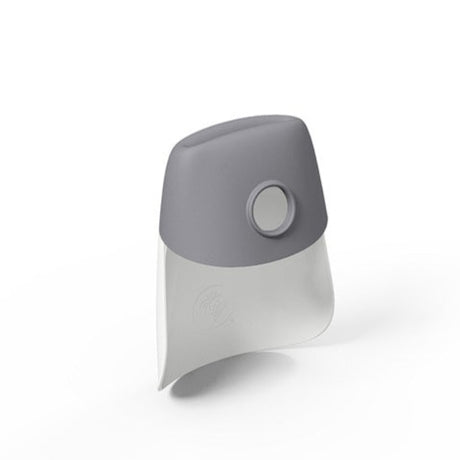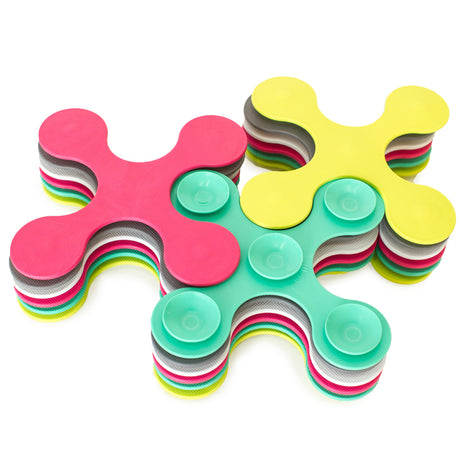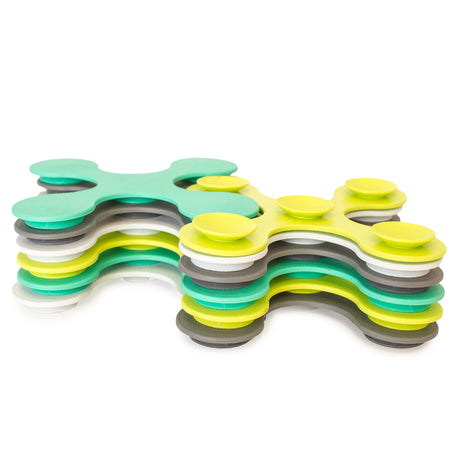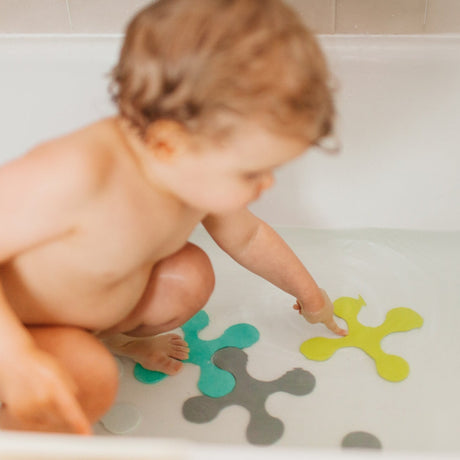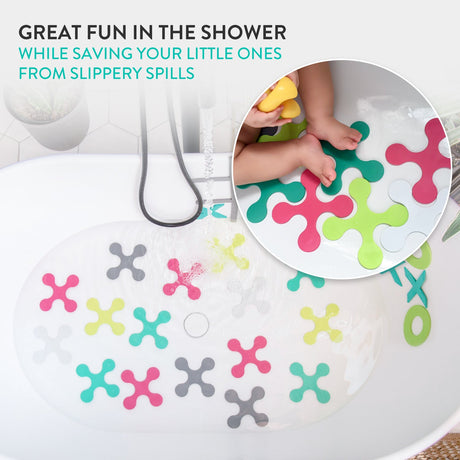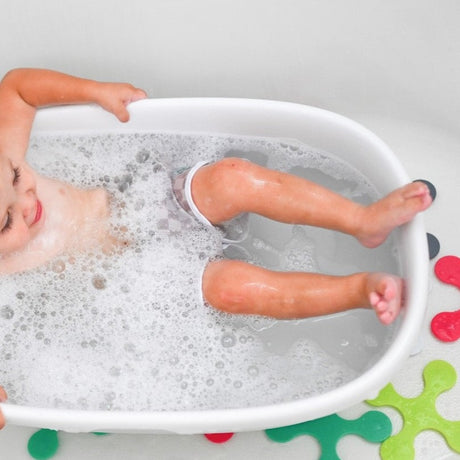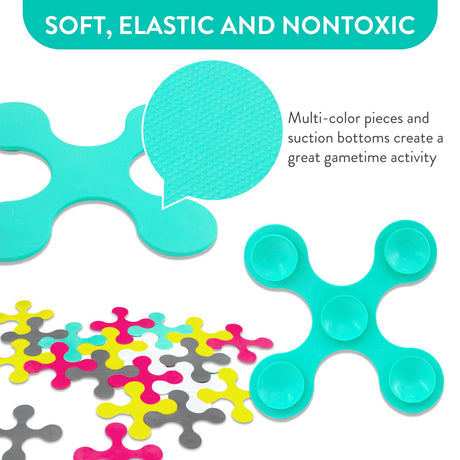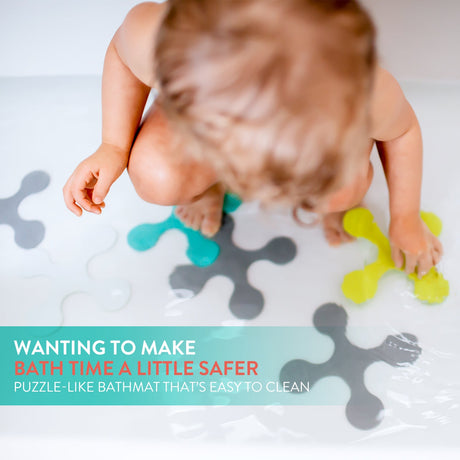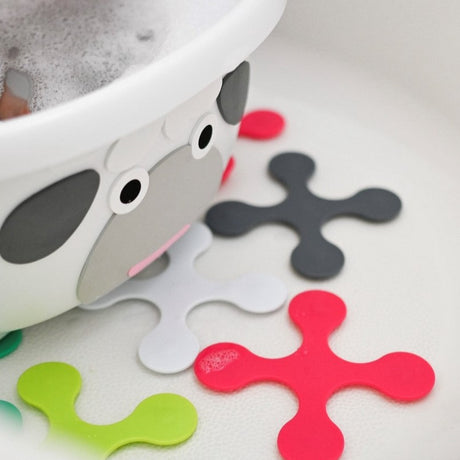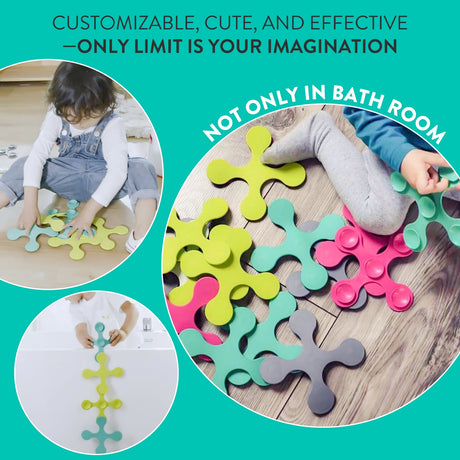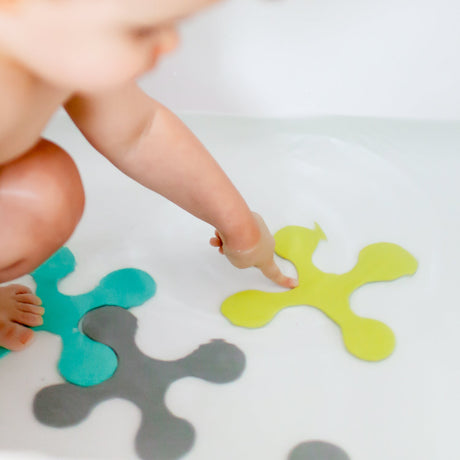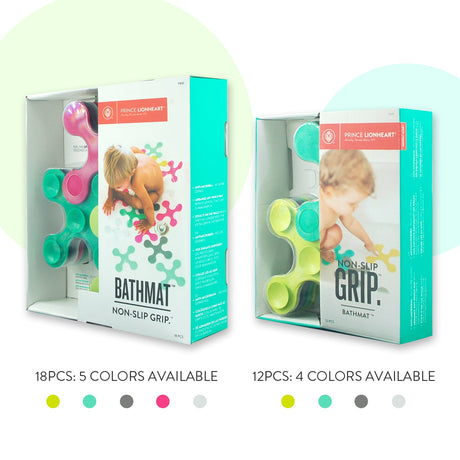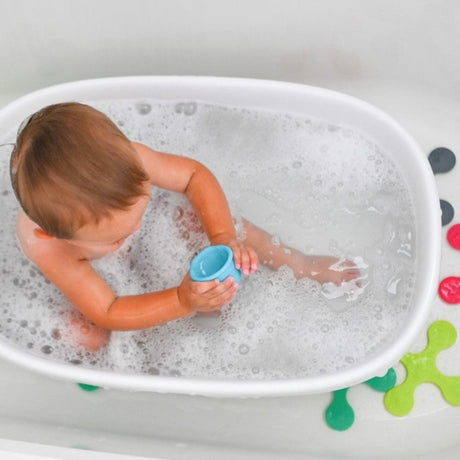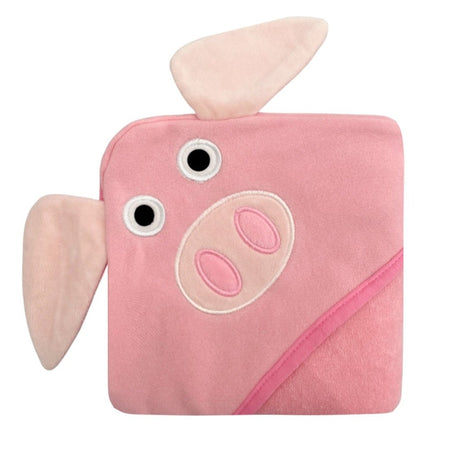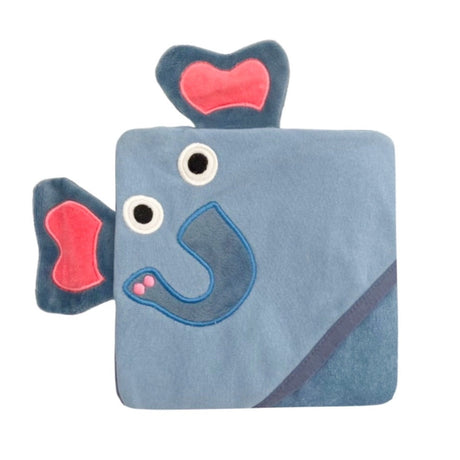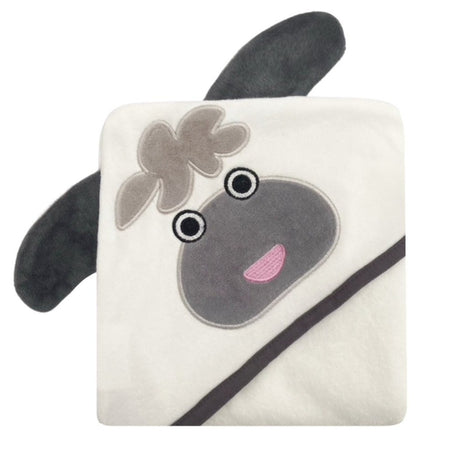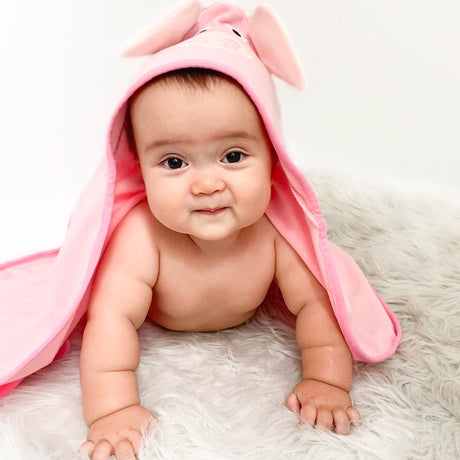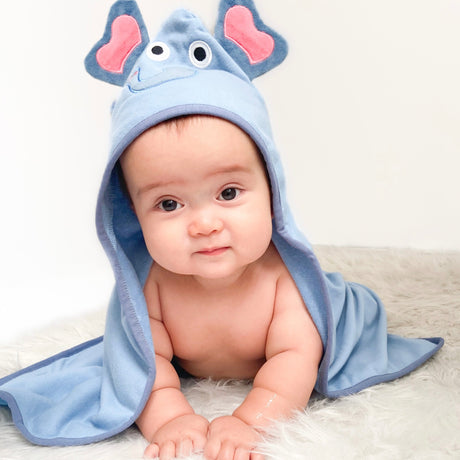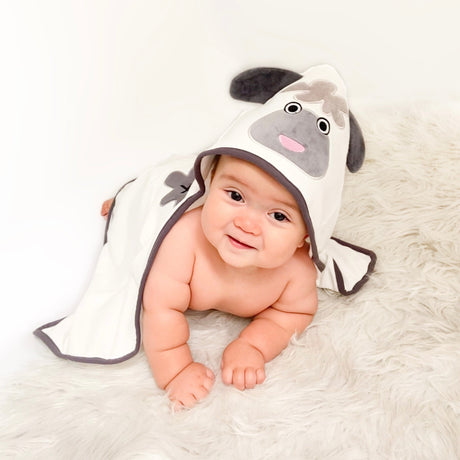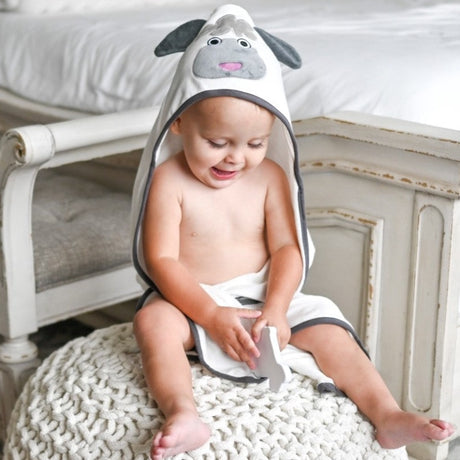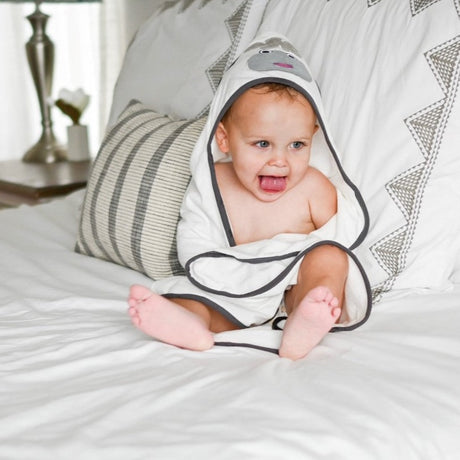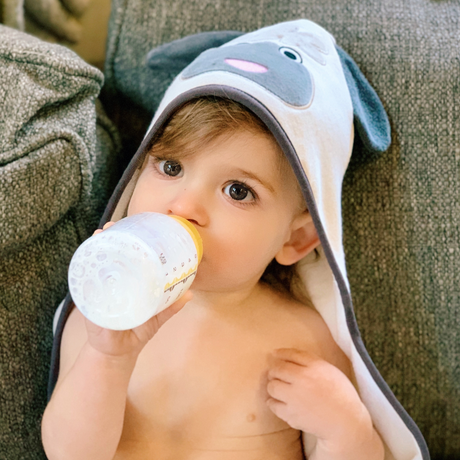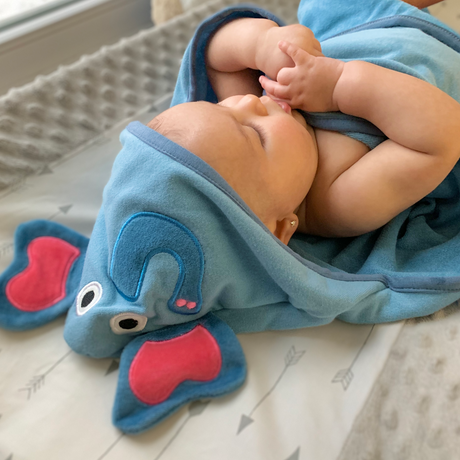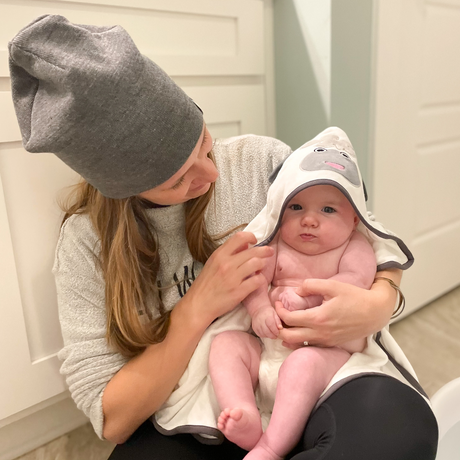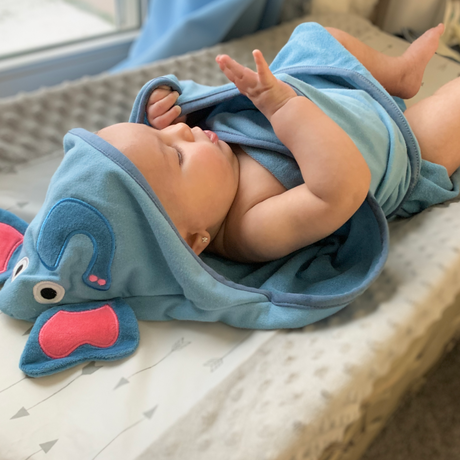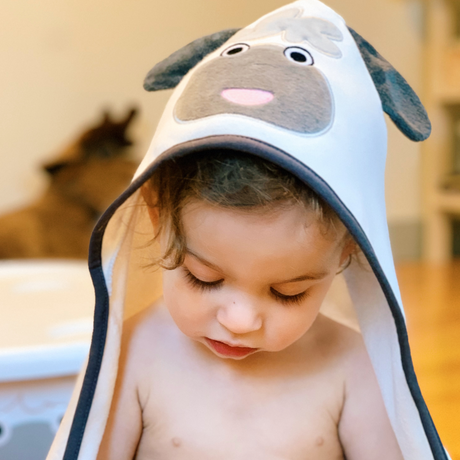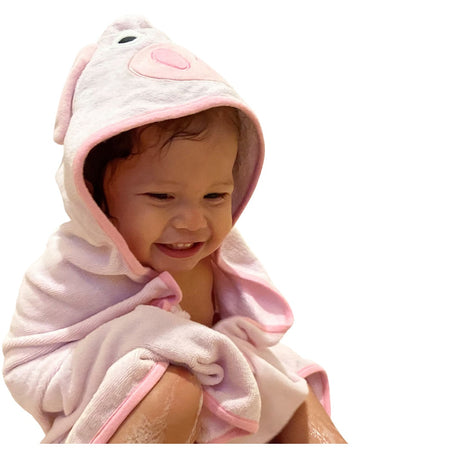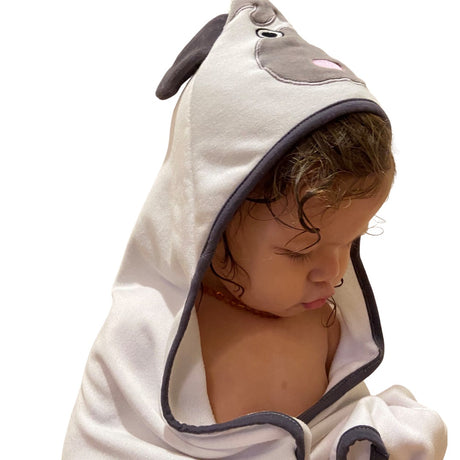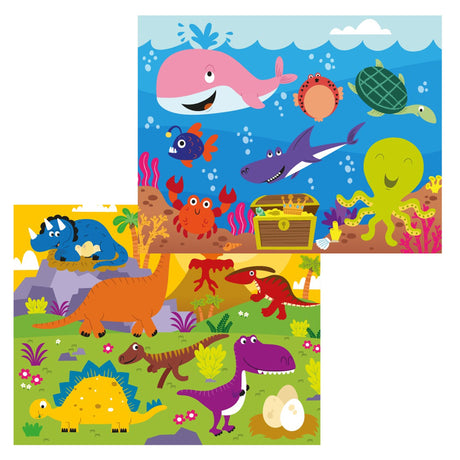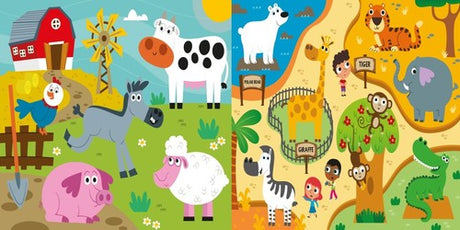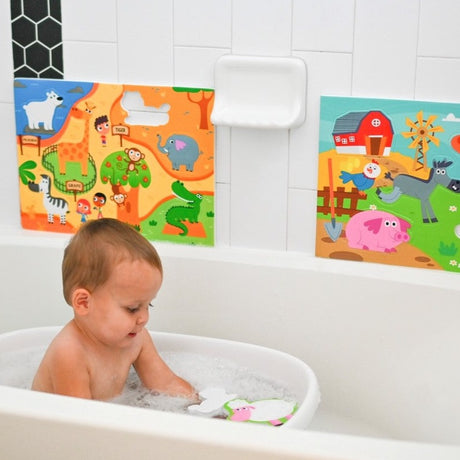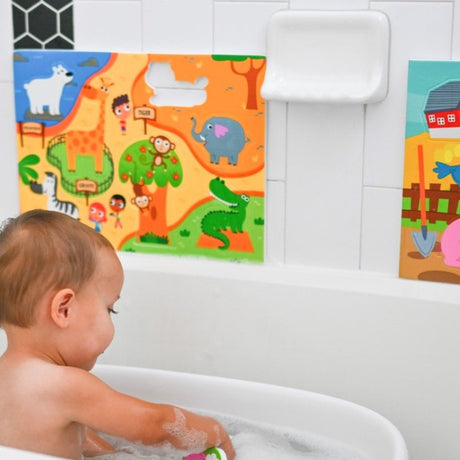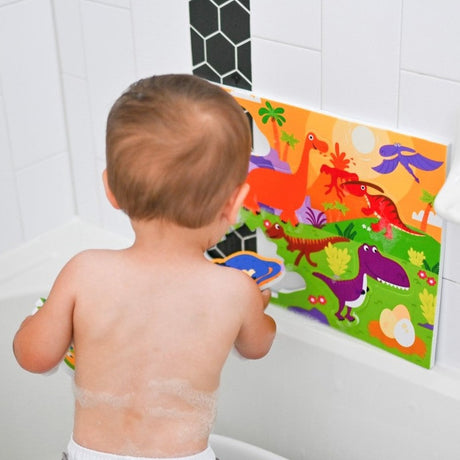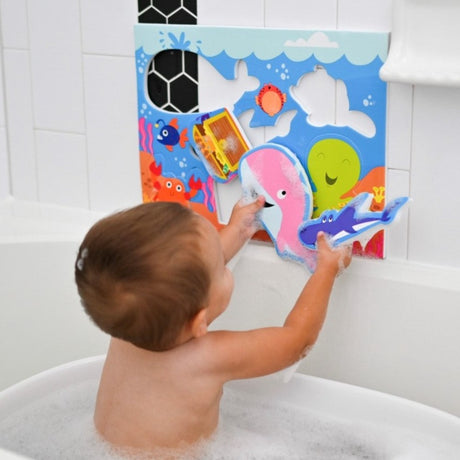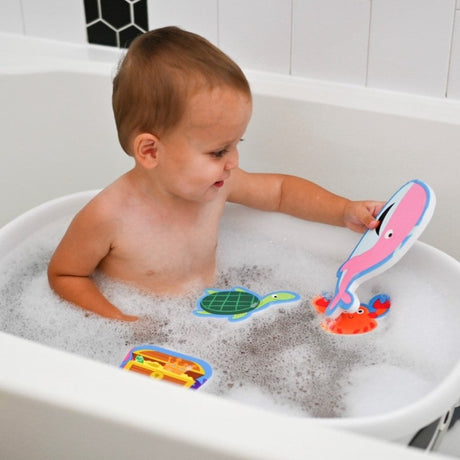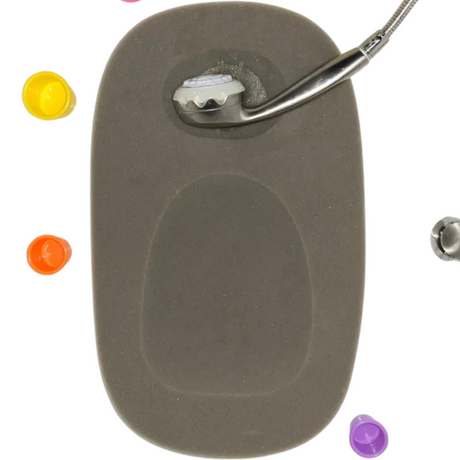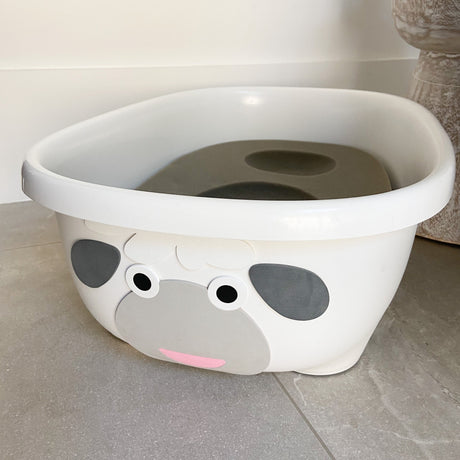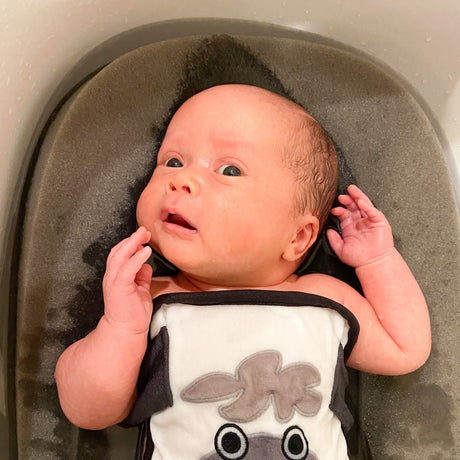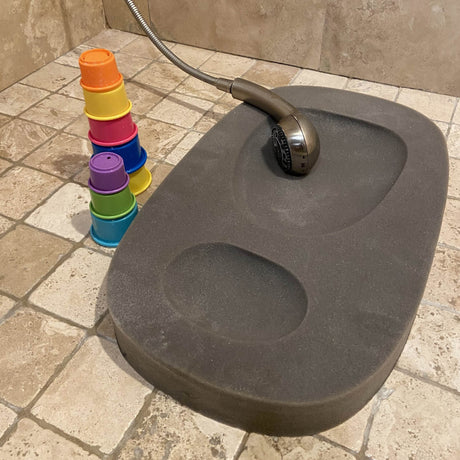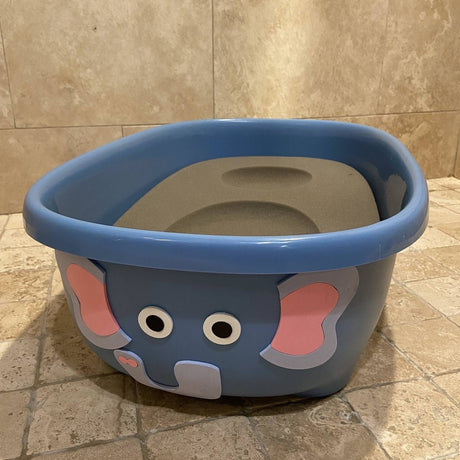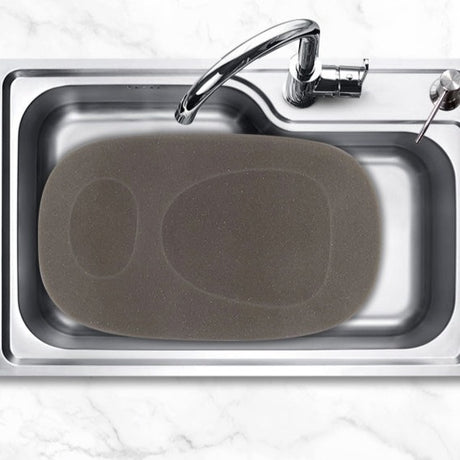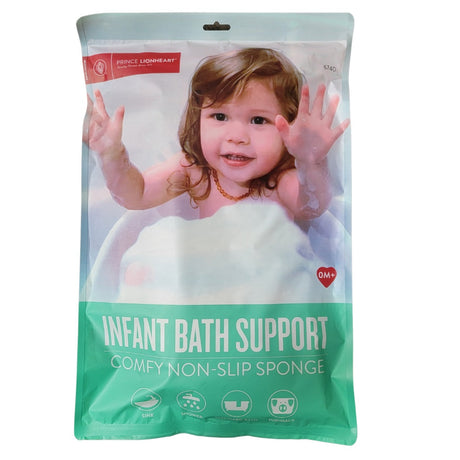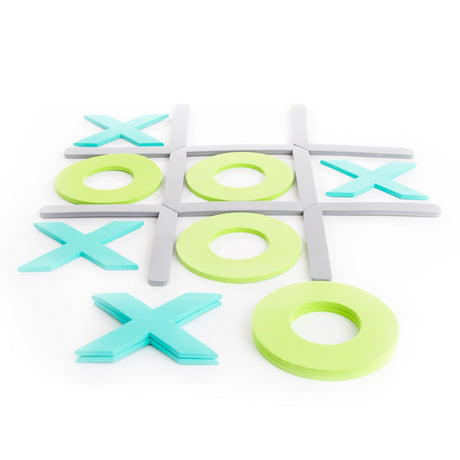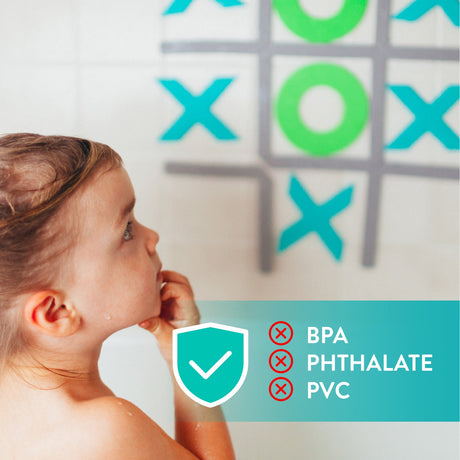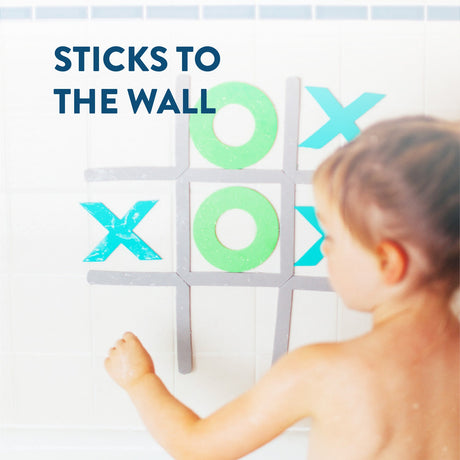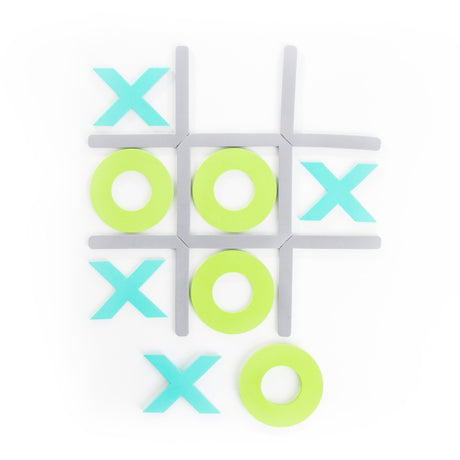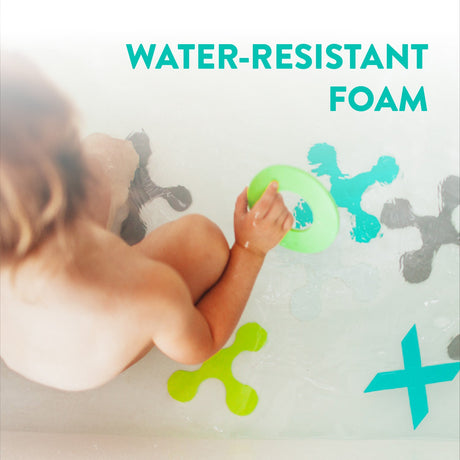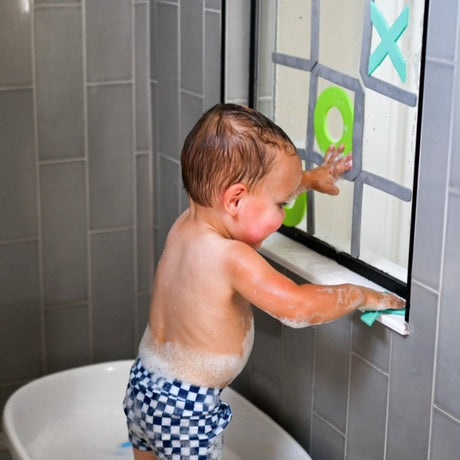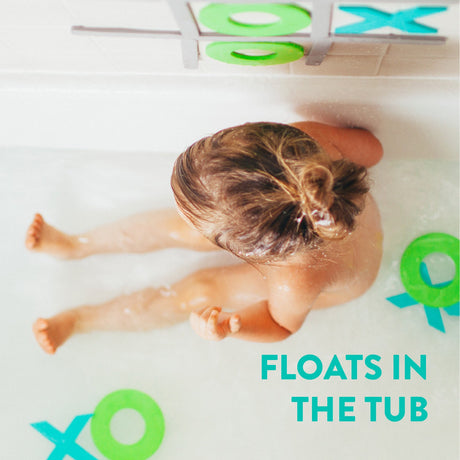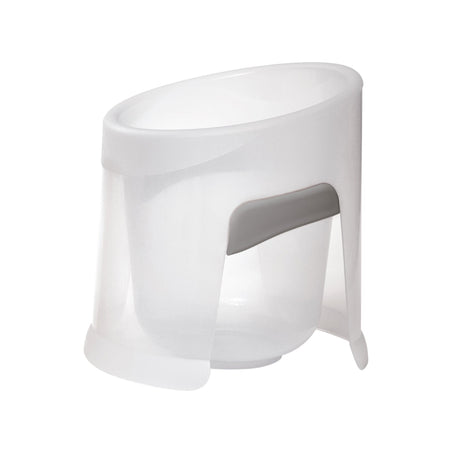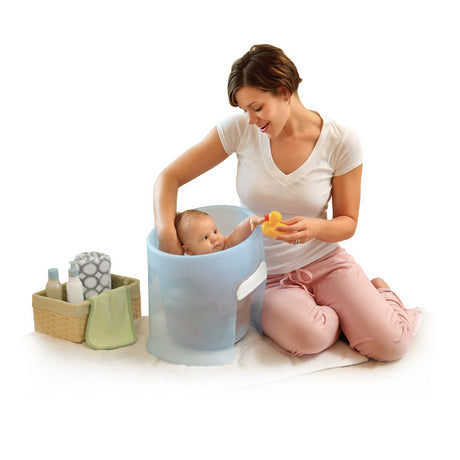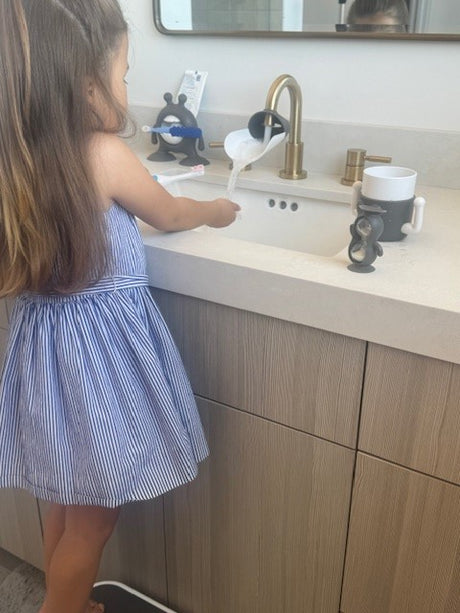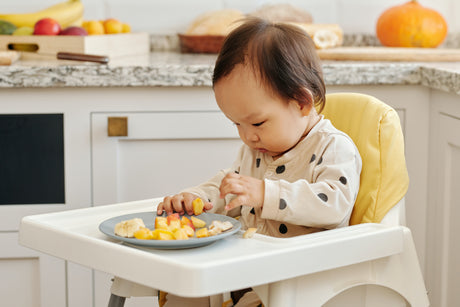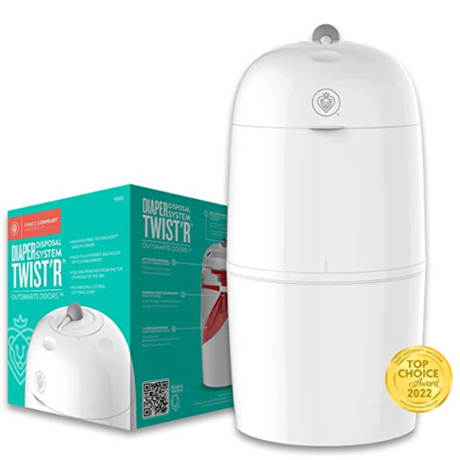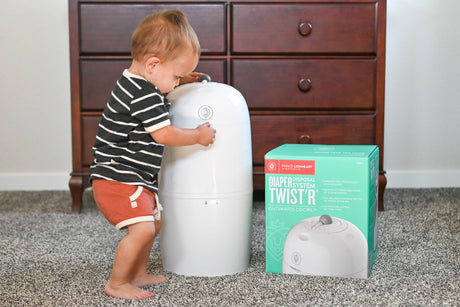When it comes to our babies, we are all about watching for their new talents and tricks. Looking forward to baby milestones by month is a huge part of being a parent! Just remember that all babies are different, and infant milestones are not hard and fast rules. Each baby will meet these developmental milestones at slightly different times. If Baby is significantly late on certain baby milestones and you get worried, talk to your pediatrician. You can also review the infant development stages below, and the tips for when to talk to your pediatrician about developmental milestones. Otherwise, just know that each baby focuses on different things at different times. Babies are nothing if not unpredictable. So, get ready to roll with those baby milestones at your baby’s pace, because family is a verb®.
Newborn Milestones: 0-2 Months Old
Big changes happen between your baby’s birthday and the day they turn 2 months old. Your baby will begin to see better, distinguish between people, get some control over their own body, and start to communicate with you in ways other than crying. You’ll have at least 3 pediatrician appointments in that time to discuss Baby’s development and address any questions or concerns you might have about newborn milestones. Keep notes about anything you want to discuss with Baby’s doctor, including your baby’s developmental milestones, feeding or sleeping issues, or even questions about being a parent. You might even be able to consult with a lactation nurse at your pediatrician’s office if you breastfeed. Make sure you keep on top of Baby’s vaccine schedule to keep Baby healthy and ready to interact with the world around them. Baby will sleep between about 14-17 hours per day during this time, including two or three naps, and should be moving toward more of those sleeping hours taking place at night as they get older.
Developmental Milestones
Between birth and 2 months old, Baby will grow and change a lot! Baby will move from more reflexive movements to more controlled, intentional movements. Here are the developmental milestones to look out for as your baby grows.By the end of the first month, most babies can:
- Bring their fists to their faces
- Move their heads from side to side during tummy time
- Make jerky, flailing, or quivering arm movements
- Respond to the sound of your voice and other noises
- Focus on objects 8-12 inches away
- Show preference for human faces and black and white/high contrast images
By 2 months old, most babies can:
- Begin to smile
- Focus on you
- Self-soothe briefly
- Coo and make happy gurgling sounds
- Turn head toward noises
- Hold head up and start to push up during tummy time
- Move arms and legs more smoothly
- Start to track things with eyes
- Recognize familiar people at a distance
- Indicate boredom by fussing or crying
Check-in with your pediatrician if Baby:
- Doesn’t latch well, suck well, or generally feed well
- Doesn’t respond to loud sounds
- Has crossed eyes the majority of the time (periodic eye crossing in the first couple months is totally normal)
- Doesn’t blink if shown a bright light
- Doesn’t track a close object moving side to side
- Doesn’t bring their hands to their mouth
- Seems overly stiff or overly floppy
- Can’t hold their head up during tummy time
- Has a consistent tremble in their lower jaw
- Doesn’t smile by the end of 2 months
What to look forward to next:
Expect some giggles, some social growth, new sounds and movements, and some extra affection! Babies love to meet new people for the next couple of months. Bring on the social hour before Baby hits the next infant milestones. Now is also the time to baby-proof, if you haven’t yet. Baby is about to get a lot more curious!
Baby Milestones: 3-6 Months Old

Between 3 and 6 months old, your baby is starting to get more social and will be developing an active interest in socializing with you… and nearly everyone who offers a smile! You’ll start to hear more and more babbling and laughing, as Baby imitates your sounds. Your baby will become more expressive with their face, body, and noises. They will be working hard on developing their strength, particularly in their upper body. During this time, Baby will likely start to eat solids, which means big changes in diapers (read: STINKY). Baby will also become more mobile, rolling or pulling themselves along and eventually sitting up. That’s why that baby proofing was so essential in the early months! Baby should now be sleeping about 14-16 hours a day, with the longest stretch taking place at night, plus naps throughout the day lasting a few hours each.
Developmental Milestones
These are the months when you’ll really start to see Baby’s personality. As they learn more about how to communicate with you and how to explore their world, your baby will begin to develop opinions and make them known!
By 3 months old, most babies can:
- Support their upper body on their arms during tummy time
- Raise and hold their head and chest up during tummy time
- Stretch and kick legs when lying down
- Open and shut hands to swipe and grasp
- Grab for, shake, and swipe at toys
- Push down with feet and legs when held upright on a firm surface
- Bring hands to their mouth easily
- Coordinate eyes and hands
- Focus intently on faces
- Track moving objects with their eyes
- Recognize familiar people and objects at a distance
- Smile when you speak
- Start to babble and imitate sounds
- Smile socially
- Enjoy playing and show displeasure when play stops by crying
- Communicate with body movements and specific sounds
- Imitate some facial expressions and movements
By 4 months old, most babies can:
- Reach out and grasp items to bring them to their mouths
- Start to roll over
- Sit with support
- Stand with support
- Start to see different color shades
- Push up to elbows when on tummy
- Play during tummy time, keeping their head up and using their hands
- Cry in different ways for different reasons (tired, hungry, annoyed, dirty diaper, etc.)
- Hold, shake, and swing at toys
- Start to show signs of teething (drooling, interest in gnawing on everything)
- Start to show interest in solid food (opening their mouth when you eat, grabbing for your food)
- Babble and make movements or facial expressions to mimic others
- Smile spontaneously and laugh
- Show enjoyment for play, and cry when play stops
By 5 months old, most babies can:
- Recognize their own name
- Recognize a few simple words
- Scoot on their tummy or roll to get around
- Move more fluidly
- Work on sitting up
- Seek out interaction and eye contact
- See a bit better, including seeing more colors
- Attempt to explore the world with their mouth and hands (hence baby-proofing!)
- Transfer objects from hand to hand
- Start to roll both ways
- Enjoy seeing their reflection in mirrors
By 6 months old, most babies can:
- Pull things toward them with a raking grasp
- Show curiosity by grabbing for things that are out of reach
- Notice cause and effect (Baby drops toy, you pick it up)
- Easily roll and push up from their tummy
- Attempt to go after something that catches their interest
- Move objects from hand to hand more adeptly
- Recognize strangers
- Respond to their own name
- Start to string vowels together while babbling (oh-oh-oh-oh)
- Practicing saying consonant sounds (mmmm)
- Take turns practicing sounds
- Start standing supported and bouncing
- Begin rocking back and forth on all fours (in preparation for crawling)
- Start to understand object permanence
Check-in with your pediatrician if Baby:
- Doesn’t show affection for caregivers
- Doesn’t respond to sounds
- Doesn’t practice making sounds/babbling
- Struggles to bring things to their mouth
- Seems to lack head to control
- Stiffens their legs and arches their back when pulling to sit
- Stiffens their legs and hold their arms back in a supported stand
- Doesn’t make eye contact or visually track
- Doesn’t smile, squeal, or laugh
- Seems very floppy or very stiff
What to look forward to next:

Get ready for a baby on the move! In the next few months, Baby will be working hard to find ways to get around. Whether that’s crawling, scooting, or barrel-rolling across the room, be prepared to keep up and keep Baby safe! You’ll also see Baby using their body to communicate more. Those full-body smiles are fun!
Baby Milestones: 7-9 Months Old
Between 7 and 9 months old, Baby is really showing off their personality. They can play with you, communicate more verbally and with body language. They are also becoming much more stable upright. During these months, Baby can be placed on the floor and there’s less fear of them falling over. They may even be moving across the floor to get to something that’s of interest. Make sure you keep the floor clear of anything dangerous or unsanitary. You want those baby gates in place and watch Baby closely; they are really going places! And speaking of going places, when you leave, you might notice Baby now has separation anxiety, which is perfectly developmentally appropriate right now. Their diet is expanding now, too. Baby is starting solids and may be beginning to experiment with some finger foods and self-feeding with new teeth. Baby should now be sleeping about 14 hours per day, with the majority of that taking place at night, along with a couple of 30 minutes to 2-hour naps during the day.
Developmental Milestones
Baby is a little mover and shaker these days! Whether they’re waving at people in the grocery store, playing peek-a-boo with you, or flirting with themselves in a mirror, your baby is all charm right now. Baby is also stronger and better able to move around. Their interest in exploring their world is piqued. You might find them getting into just about everything.
By 7 months old, most babies can:
- Roll over from front to back and back to front
- Sit without support
- Begin to move with alternating leg and arm movements (for crawling or scooting)
- Attempt to move toward out of reach objects
- Move objects from one hand to the other
- Grab items with their whole hand and palm them
- Hold their full weight on their legs when supported
- Play peek-a-boo
- Use their hands and mouth to explore items
- Respond to their own name
- Babble, using chains of consonants (ma-ma-ma, da-da-da)
- Distinguish between emotions by the tone of voice
- Vocally express happiness and frustration
- Interact with their own mirror image
- See in full-color, with matured distance vision
By 8 months old, most babies can:
- Cruise around on the floor
- Stand without assistance
- Store memories
- Imitate others while playing
- Bite some softer foods with their new teeth (top and bottom teeth will start to come in)
- Start to work on the pincer grasp
- Start to show fear of strangers
By 9 months old, most babies can:
- Cruise around while standing and holding onto something
- Change positions (from tummy to hands and knees, or from sitting to pulling up)
- Crawl, scoot, or army crawl on belly
- Use the pincer grasp
- Start pointing to indicate interest
- Clap their hands together
- Bang toys together
- Play favorites (toys and people)
- Understand the word “no”
- Copy gestures and noises
- Follow something with their eyes when it falls
- Understand more about object permanence and look for things that are hidden
- Feed themselves
Check-in with your pediatrician if Baby:
- Won’t bear weight on legs with support
- Uses just one side of their body
- Doesn’t use hands while sitting
- Sits with a rounded back and doesn’t straighten
- Struggles with crawling or creeping
- Doesn’t move objects from one hand to the other
- Doesn’t babble
- Doesn’t show enjoyment for play
- Doesn’t sit with help
- Doesn’t respond to their name
- Doesn’t seem to recognize familiar people
- Doesn’t look where you point
- Doesn’t explore their environment
What to look forward to next:
Now that you’re coming up on Baby’s first birthday, there are so many exciting baby milestones to anticipate. There will be lots of new teeth. Teeth give way to new foods and huge growth in Baby’s ability to interact and communicate. Your baby will be interested in trying new things and exploring everything around them, so get ready!
Baby Milestones: 10-12 Months Old
You’re getting to the end of Baby’s first year. Between 10 and 12 months, your baby will make some leaps in verbal communication (first word, anyone?)! By their first birthday, most babies are saying mama or dada, and babbling to communicate, even if you don’t always understand what they’re saying. Baby will be eating more foods and will be interested in feeding themselves. In fact, they’ll be interested in doing a lot of things themselves, including exploring more and experimenting with standing unsupported. You may even get Baby’s first few steps around 12 months! Congrats—you and Baby have reached their first birthday! Separation anxiety, and a general desire to work on all their new skills, might keep Baby up from time to time. Keep up with your sleep routines to maintain those 14 hours of sleep per day. If they are practicing standing or talking at bedtime, just let them practice and they’ll fall asleep soon enough.

Developmental Milestones
Baby will be chattering away at you, experimenting with babbling for long periods, and possibly even throwing in recognizable words. They’ll be interested in trying new things, including new experiences, new sounds, and new foods. Make sure to keep anything you don’t want them to try, like eating the dog’s food or thwacking your guitar, up and out of reach. And, since Baby will be practicing pulling up, cruising and, eventually, walking, it’s time to clear off those surfaces and fully baby-proof (if you still haven’t.) You don’t want Baby to grab or explore anything dangerous or breakable.
By 10 months old, most babies can:
- Pull themselves up to stand
- Cruise, standing up, while holding on
- Crawl or elephant walk
- Use two hands to explore, open things, and play
- Feed themselves finger foods and hold a cup/bottle
- Enjoy a game of pick-up (Baby drops it, you pick it up)
- Enjoy experiential play that lets them see cause and effect
- Explore dangerous areas of the house, like drawers and outlets (so be prepared!)
- Test your responses to things (Yep, limit testing starts already!)
- Imitate gestures and mannerisms
By 11 months old, most babies can:
- Enjoy looking at and listening to books
- Stand still, possibly unsupported
- Crawl or elephant walk quickly to get something they want
- Use alternating hand movements to drum or play pattycake
- Use objects correctly after observation
- Identify objects or pictures when named
By 12 months old, most babies can:
- Practice working toward their first step, or take it!
- Turn or take side steps while holding on
- Practice letting go and standing unsupported
- Sit, balanced, while throwing something
- Wave goodbye
- Meaningfully refer to Mama or Dada
- Respond to simple directions (Don’t touch, come here, no)
- Incorporate proper speech rhythms while babbling
- Hold their own board book
- Stack or sort toys
- Drop toys into a basket or bucket
- Find hidden things easily
- Imitate sounds, including animal sounds
- Enjoy listening to songs and music
- Follow your gaze or your pointing finger
- Point clearly to indicate interest
- Master the pincer grasp
- Use hand movements or baby sign language to communicate needs
- Hand you things when they want help
- Move their body to help with getting dressed or diaper changes
- Show fear and nervousness
Check-in with your pediatrician if Baby:
- Doesn’t crawl or creep yet
- Can’t stand while supported
- Doesn’t look for things you hide
- Doesn’t use any words yet (including mama or dada)
- Doesn’t use their body to communicate, like pointing, waving, or shaking their head
- Loses skills they did have
What to look forward to next:
You’ve just reached one of the most anticipated baby milestones—Baby’s first birthday! You have so much ahead of you as your little one moves from babyhood into toddlerhood. Baby will soon be walking, building their vocabulary, and eating all kinds of foods full time. They will be learning to hold utensils and cups, doing more on their own as time goes on. Your little one will be asserting their independence, to your delight—and frustration—at times. They’ll also begin to get particular about things. You bet that they’ll make their opinions known with one of the great rites of parenthood: tantrums. Your toddler’s increasing independence will lead to more than just tantrums, though. It will also lead to incredible baby milestones, from running, to kicking a ball, to wonderful, imaginative play. They will also become masters at leaving a mess in their wake everywhere they go. Kids are messy. So is parenting.® Do your best to keep up and remember that your little one learns from the chaos they create! Keep supporting your child’s independence and creativity as you watch them enter the next stage. Here, your toddler’s personality will be in full bloom.
Prince Lionheart Is Proud to Be A Part of Your Baby’s Milestones
The first year of your baby’s life is full of so many firsts and so many baby milestones; it’s truly a wonder to watch Baby grow. As Baby moves through each new infant milestone, your family will adjust to keep up with your baby’s new knowledge and infant development stages.
Make sure you’re prepared for each new step in Baby’s development with the right gear to keep Baby safe, learning, and growing as they progress through the baby milestones by month. Whether you’re stocking Baby’s room with Prince Lionheart nursery gear that can keep up with each of their developmental milestones, or using our products to seat ‘em and feed ‘em, while keeping them both curious and safe, Prince Lionheart is here to help make your life as a parent easier.
We’re parents, too, and we know the challenges of meeting each of the baby milestones with the right gear and the right attitude. Our company won’t make just anything. Instead, our commitment is to solving challenges with products that matter, that are safer, or are just plain better. The passion and love we feel for what we do is centered in the details, taking the honor of a brand and combining it with the values of a family. Prince Lionheart is so thrilled to be a part of helping your family grow together with products and information that make your life easier. We answer to a good night’s sleep®, and if we can help you get one through each of your baby’s milestones, we’ve done our job well. This guide is just one more way we can help you.
